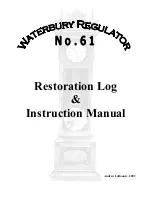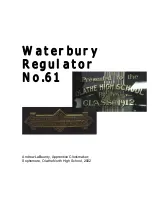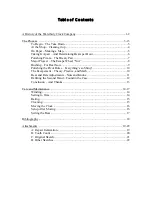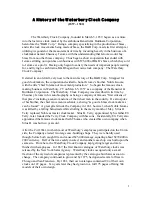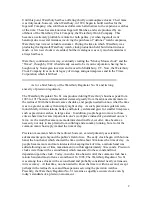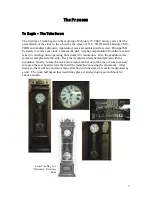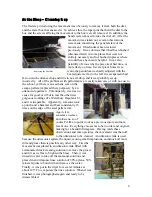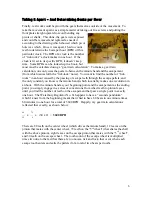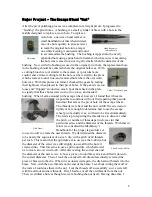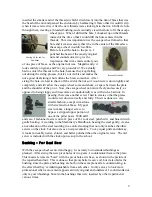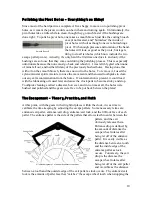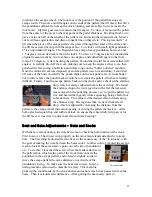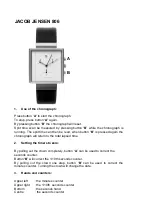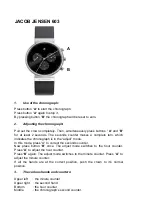
4
At the Shop – Cleaning it up
The first step in restoring the movement was obviously to remove it from both the dial
and the metal box that encased it. To achieve this, the taper pins that held the dial to the
box and the screws affixing the movement to the box were all removed. In addition, the
hands were removed to take the dial off. After the
movement was taken out, several observations
were made concerning the general state of the
movement. It had indeed, been restored
previously. It was obvious that it had been bushed
(discussed later) in some places that were not
entirely necessary and not bushed in places where
it would have been more helpful. It was also
painfully obvious why the piece kept bad time, or
more likely
no
time. Several pivot holes were
worn, the pendulum was badly adjusted with the
beat adjuster set far to the left, the escapement had
far too much entrance drop and little to no exit drop, and it was probably set up
incorrectly. All of the problems with performance are easily taken care of with no cost to
the school, yet there is an aesthetic scar on the
escape pallet arm placed there purposely by an
unknown repairman. Unfortunately, it serves no
cause for good or ill but to mar the otherwise
gorgeous workings of a Waterbury Regulator 61,
and it is irreparable. Apparently, someone took
a punch and a hammer and beat consistently 16
times on the edge of the steel pallet arms.
Again, it is
senseless, useless,
and obscene, so of
course I’d like to point it out as a previous injury and not a
recent one. Everything else seems to be in order and original,
making for a beautiful timepiece. Having made these
observations and taken pictures, the movement was then off
to the ultrasonics to be cleaned. An ultrasonic tank is used
because the ultrasonics agitate the liquid, causing small implosions, and knock off more
dirt and grease than is possible any other way. First the
movement was placed in an ultrasonic tank filled with
ammoniated clock cleaning solution to remove the grease
and dirt, as well as to brighten the brass. Then, it was
rinsed in water to take off the ammonia solution and
placed in an ultrasonic rinse solution of 50% xylene, 50%
mineral spirits to bond with and remove the water.
Finally, it was put in the dryer for several minutes at
about 125
o
F to evaporate the rinse solution. When it was
finished, it was photographed again and ready to be
disassembled.
Removing the Dial Pins
Summary of Contents for Waterbury Regulator 61
Page 1: ...1 No 61 Restoration Log Instruction Manual Andrew LaBounty 2002...
Page 24: ...21 Attachment C Original Sketch...
Page 25: ...22 Attachment D Other Sketches...
Page 26: ...23...

